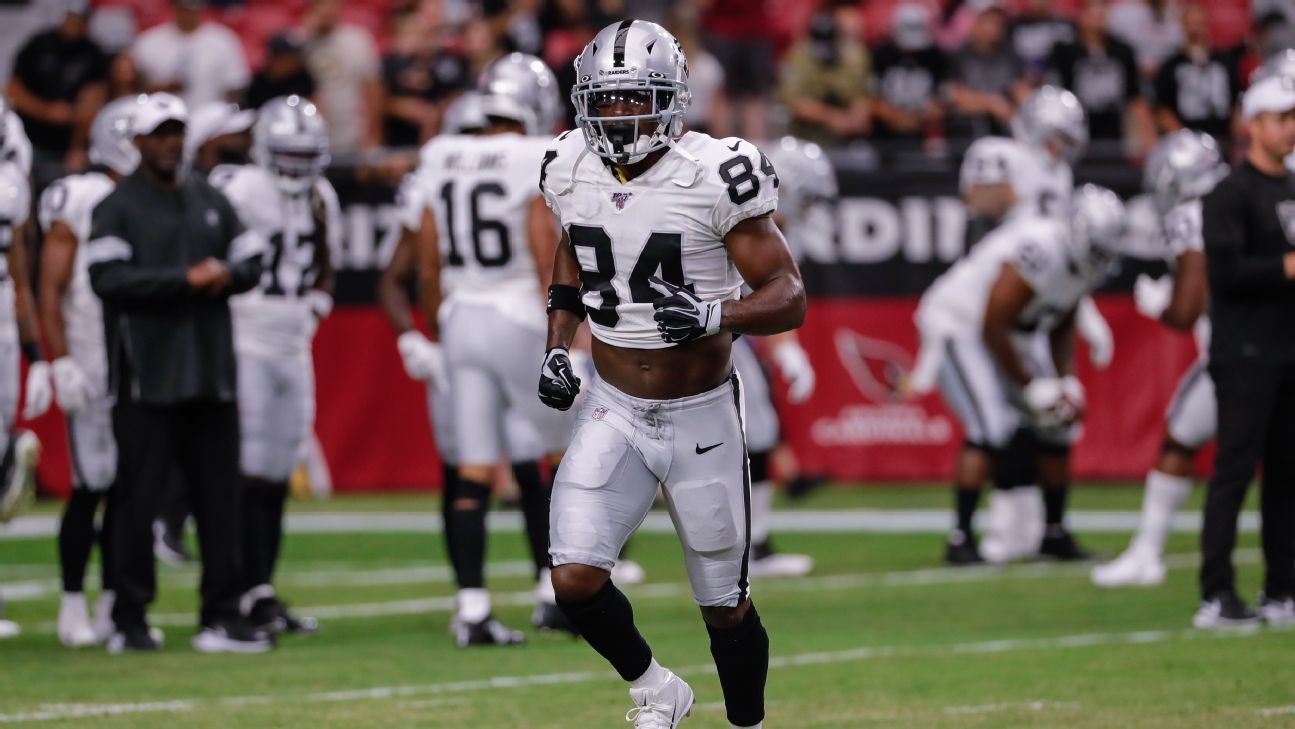We are into Week 3 of Antonio Brown‘s ongoing attempts to find an NFL-approved helmet that the Oakland Raiders wide receiver is also willing to wear. How could this be possible?
Glad you asked. Here’s everything you need to know to get up to speed.
What’s the latest?
Brown has been fighting an NFL policy that requires helmet certification according to industry standards. He lost a grievance against the NFL that sought an exception to wear his Schutt Air Advantage, a helmet he has worn throughout his career and that was available on the market between 2002 and 2009.
He believed last week that he had found a suitable replacement, but that particular helmet was not certified according to the standards of the National Operating Committee on Standards for Athletic Equipment (NOCSAE). The actual certification tests are licensed out to the National Athletic Equipment Reconditioners Association (NAERA).
What was the problem?
One of the NAERA’s requirements is that a helmet cannot be more than 10 years old. Although Schutt removed the Air Advantage from its product line in 2009, it continued to manufacture it for several additional years, to meet special orders and/or to ensure appropriate parts for warranty purposes, according to Schutt director of marketing and communications Glenn Beckmann. Brown located a helmet manufactured within the 10-year window, but NAERA has additional testing parameters that it did not meet.
0:54
Ryan Clark urges Antonio Brown to stop harping on drama off the field and focus on just playing football.
What is so great about the Air Advantage? Aren’t newer helmets better and safer?
According to Beckmann, the Air Advantage was lightweight relative to other helmets of its era and was also easy to custom fit. Skill position players believed it helped maximize their speed.
“It was one of the lightest, if not the lightest, in the field,” Beckmann said. “For players, especially at the professional level, every advantage that they can have is important. If they feel like they are lighter wearing a certain helmet, then they are lighter and faster in perception and in reality.”
The Air Advantage also had spaces carved out on either side to maximize peripheral vision and minimize any blockage, an obvious necessity for receivers.
Well, wouldn’t approved helmets have the same features?
In many cases, yes. But ESPN’s Adam Schefter has reported that Brown thinks the best alternatives all protrude and block his vision. Agent Drew Rosenhaus said Monday on ESPN’s Get Up that Brown’s preferred helmet “has kept him safe” throughout his football career.
And from a sentimental perspective, Brown is far from the only player who gets attached to particular helmets for all kinds of reasons.
New England Patriots quarterback Tom Brady, forced by another NFL policy to change helmets this season, said he still doesn’t love the new one. And New Orleans Saints quarterback Drew Brees said he didn’t initially like his new helmet because it looked like he was “going to Mars.”
So how will this end?
It’s possible that Brown will find an Air Advantage that NAERA will certify. If not, he could file a second grievance about the failure to certify a helmet that is less than 10 years old. Given the NFL’s recent history, a federal lawsuit can’t be ruled out, with an injunction to allow him to play in the interim with some version of the Air Advantage. Otherwise, he’ll have to follow through on his initial threat to retire.
What about the Raiders? They can’t be happy that Brown has missed most of camp.
They aren’t. General manager Mike Mayock issued an ultimatum on Sunday, saying: “It’s time for him to be all-in or all-out.”
Per Schefter, Brown returned to camp in time for a team meeting Monday morning.
1:15
Marcus Spears argues that Raiders GM Mike Mayock traded for Antonio Brown for his production while not taking into account his past actions.
Does that mean it’s over?
Not necessarily. If Brown continues to hold firm, the Raiders could release him, trade him or try to place him on a reserve list that would absolve them of paying the $30.125 million in guarantees he otherwise would receive over the next two seasons. Releasing Brown would double his 2019 cap charge to nearly $30 million, and the Raiders would still be liable for paying him the cash.
It’s difficult to envision a trade market developing. The Raiders’ best option might be to place Brown on the reserve/did not report list. If they do, the Raiders would not be liable for paying his salary and his contract contract would toll, meaning it would not count on their 2019 cap.

